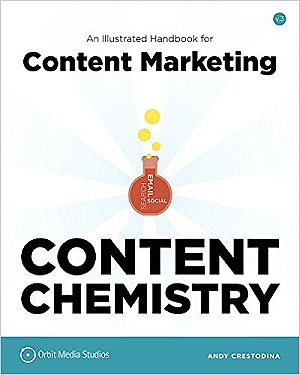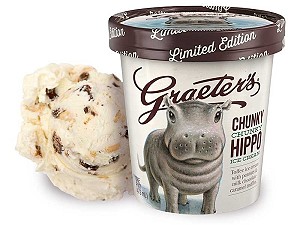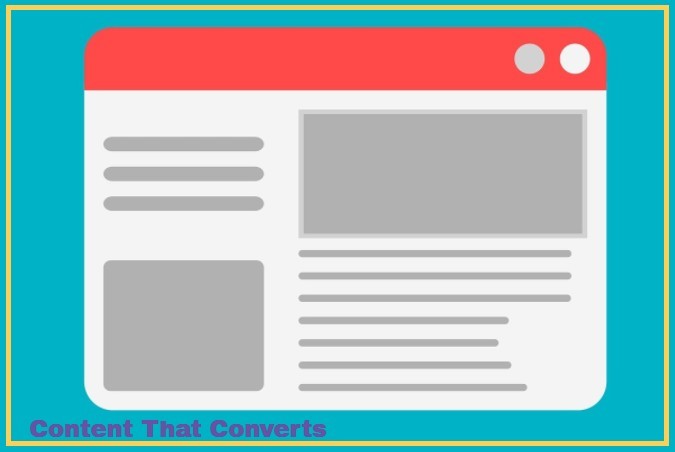by Kurt Scholle
Chunk Website Content for Better Readability
 Do you want people to read your content?
Do you want people to read your content?
Of course.
Everybody SCANS a web page before deciding to read it. (And even then, they may not read it entirely.)
They/We will look at headlines and images first. Then bullet points.
THEN, if interested, they MAY read the rest, usually if the sentences are simple and the paragraphs are short.
Chunking Website Content is a method of presenting information into small pieces or ‘chunks’ of information to make reading and understanding faster and easier. Learning how to chunk website content is especially useful for material presented on websites because readers tend to scan pages first before they decide to read the full page.
Humans have an attention span of about 4-5 seconds, so they usually make a decision whether to read a page within 5 to 8 seconds.
This is important for several reasons…
- If they don’t resonate with your content very quickly, they will leave and you will lose a potential sale.
- If they came in from a search engine and then bail out, the search engines take that as a sign that the page may not be good for the query the user typed in and they will rank your page lower when someone else uses a similar query.
Information is conveyed more quickly, allowing readers to find what they need more efficiently.
Chunked content usually contains:
- A strong keyword-rich headline. (Bonus points if it also contains a benefit to reading the page.)
- A short introductory paragraph of only 2-3 sentences. (For SEO, you should use the Focus Keyword for the piece in the first paragraph)
- Bullet lists that convey information quickly. Benefits of your product or service work well. (Features tell, benefits sell.)
- Keyword-rich and benefit-rich sub-headlines.
- Short paragraphs that convey one idea per paragraph. (Even 1-sentence paragraphs)
- Graphics. They break up a page for easier reading, but graphics can convey emotions and ‘a picture is worth 1,000 words.’
Speaking of graphics, consider Pinnable graphics that people will curate using Pinterest. You may want to use the Pinterest plugin on your site. Infographics are also very popular and Pinnable!
The Bite, Snack & Meal Method
Leslie O’Flahavan came up with the concept of chunking content in a specific way around the turn of the century. She taught the how to chunk website content method by describing site visitors as ‘nibblers’ or those ready to dive right in. The method was originally described in a 2001 article in Inc magazine.
Some will nibble, some will snack and some will snarf down anything put in front of them!

Bite – a headline with a message.
“Wash a car without leaving streaks – research shows special technique works best”
When the option is available, the bite links to the ‘meal.’
Hungry for more?
Snack – a concise summary of only 2-3 sentences that provides enough information for a content overview.
“Wash your car the right way and you’ll avoid annoying streaks, while saving water. Research from the Car Washing Institute of America’s new study shows that starting at the top washing your way down works best. Avoid streaks, reduce damage from grit and reduce water use by 50% when you start at the top.”
The snack then links to the content.
Got the ‘hangrys.’
Meal – the full, original content
Example: a lengthy article on washing a car
Spice any of them up with links; on-page, on-site (page or post) or off-site. You could link to the site’s About Page, Contact Us or a specific product/service.
Chunk Content by Starting With an Outline
It’s very important to map out your website content ahead of time.
I coach clients and students to start page content or a blog post with an outline, which is a standard process, THEN leave it as an outline! Can you get your point across and get the reader to do what you want with some headlines, a short paragraph or two, some bullet points and an image? I wrote about this in a previous post on getting your content to rank #1 on Google. (Scroll down to the How to Chunk Content graphic.)
Header tags, which are defined in your content as H1 to H6 tags are important signals to Google. Many website content marketers mistakenly use them as a way to manage font sizes, but that is not the purpose of H-tags.
Understanding Visitor Intent
Andy Crestodina, author of Content Chemistry, talks about the intent of visitors to your website; some who are searching for answers or the “how” or “why” and some who understand their problem and are looking for specific products or solutions.
People who are looking for information on a problem they have usually find their solution on a blog or YouTube and by using keyword queries that begin with how, what or why. Once they understand their problem, they begin looking for a specific product or service on a page that describe the solution, benefits, features, price and how to order.
It’s important to understand the difference between the two when writing text and selecting images and Calls To Action.
5 Tips for Content Chunking
Prioritize the content. The most important content should come first, if possible and be followed logical in order. Think of organizing content as an inverted pyramid.
Images help quite a bit and for social sharing, they should be at least twice as wide as they are tall. (For Pinterest, large vertical images work best.)
Quotes add expert support. It’s not just you saying it. They can be used as a graphic to break up other content.
Limit the information you express is a single post or page. Neuroscience tells us that humans can only digest 3-5 ideas at a time. If you have more than 3 or 4 main ideas, you should break your content up into 2 screens or blog posts.
Author Resource Boxes are standard on guest blog posts and benefit the writer by linking back to their property. You should do this on your own site as a way of presenting your qualifications and a link to your author page, About or social media profile.
What’s Next
I hope you have benefitted from this article on how to chunk website content to make it easier for visitors to confirm that you have the solution they are looking for. Please comment below!




